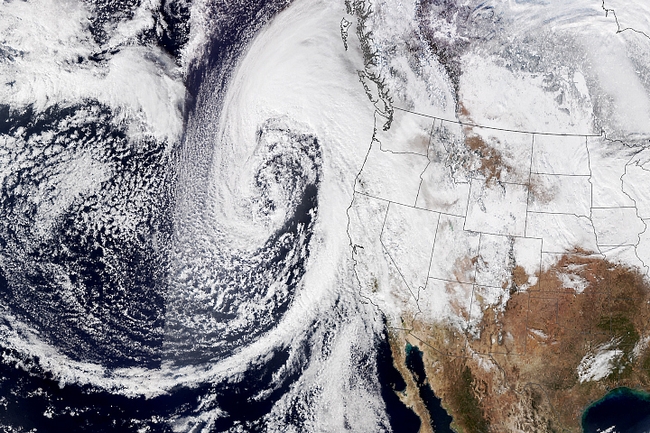Preparations for severe weather and damage control in home gardens and orchards have become a major focus for Master Gardeners during the last 10 years. California Master Gardeners are helping home gardeners deal with drought, with atmospheric river ‘bombs' that bring high winds, heavy rains and flooding, with heat spikes and with wildfire smoke and ash. This year we also experienced extended cold spells with night time temperatures near freezing until April.
Here's a brief review of the major problems home gardeners are facing and some ideas for mitigation of the results of severe weather.
Drought: Amend the soil in planting beds with large amounts of compost and humus twice a year to increase water retention and retard runoff. Replace lawns with drought-tolerant plants and California natives and install water-conserving irrigation. New irrigation devices come onto the market every year; check them out frequently. Consistently maintain a three- to four-inch layer of organic mulch. Leave the leaves from healthy trees to decompose in beds rather than removing them. This preserves beneficial micro organisms in the soil and encourages the development of beneficial fungi that create hyphae, or long fungal threads, which add structure to the soil.
Atmospheric river ‘bombs': Prepare for heavy rain and flood control in the landscape. Fill in low spots, create slopes and shallow trenches within the landscape to carry water away from structures. Amend compacted soil with compost or humus. Replace concrete areas with pavers, bricks or decomposed granite that will allow water to percolate into the soil below.
High winds: Support smaller trees with two stakes placed just outside the root ball to the west/northwest side of the tree, the direction of the prevailing winter storm winds in the Central San Joaquin Valley. When planting new trees always position the tree so that the heavier side with more branches or bigger branches is to the northwest, to help balance the tree against the wind. Plan on regular pruning to remove broken, dead or diseased branches and to correct weak branch structures.
Heat spikes: Deep irrigate a day or two before a heat spike, or several consecutive days of temperatures above 100 degrees, is predicted to arrive. Plan on hand watering container plants twice a day during long hot spells. Move containers into the shade during hot spells and provide afternoon shade for crop-producing plants with movable shade structures.
Wildfire smoke and ash: Wash off ash and dust from trees and bushes frequently and try to direct the water into planting beds. Cover crop-producing plants temporarily with tarps or row covers to keep pollutants from tainting the fruit or vegetables.
Long cold spells: The longer cold season this year really disrupted the (used-to-be) normal spring flowering schedule and delayed planting time for warm-season vegetables and flowering annuals. Transplants and seedlings were stunted by the cold and did not recover full vigor until mid-summer, so ripening and harvest have also been delayed. Home gardeners who compete to bring in the first tomatoes in summer or serve the last tomatoes for Thanksgiving in November may need to invest in heat-retaining row covers or heat-reflecting mulches and materials.
